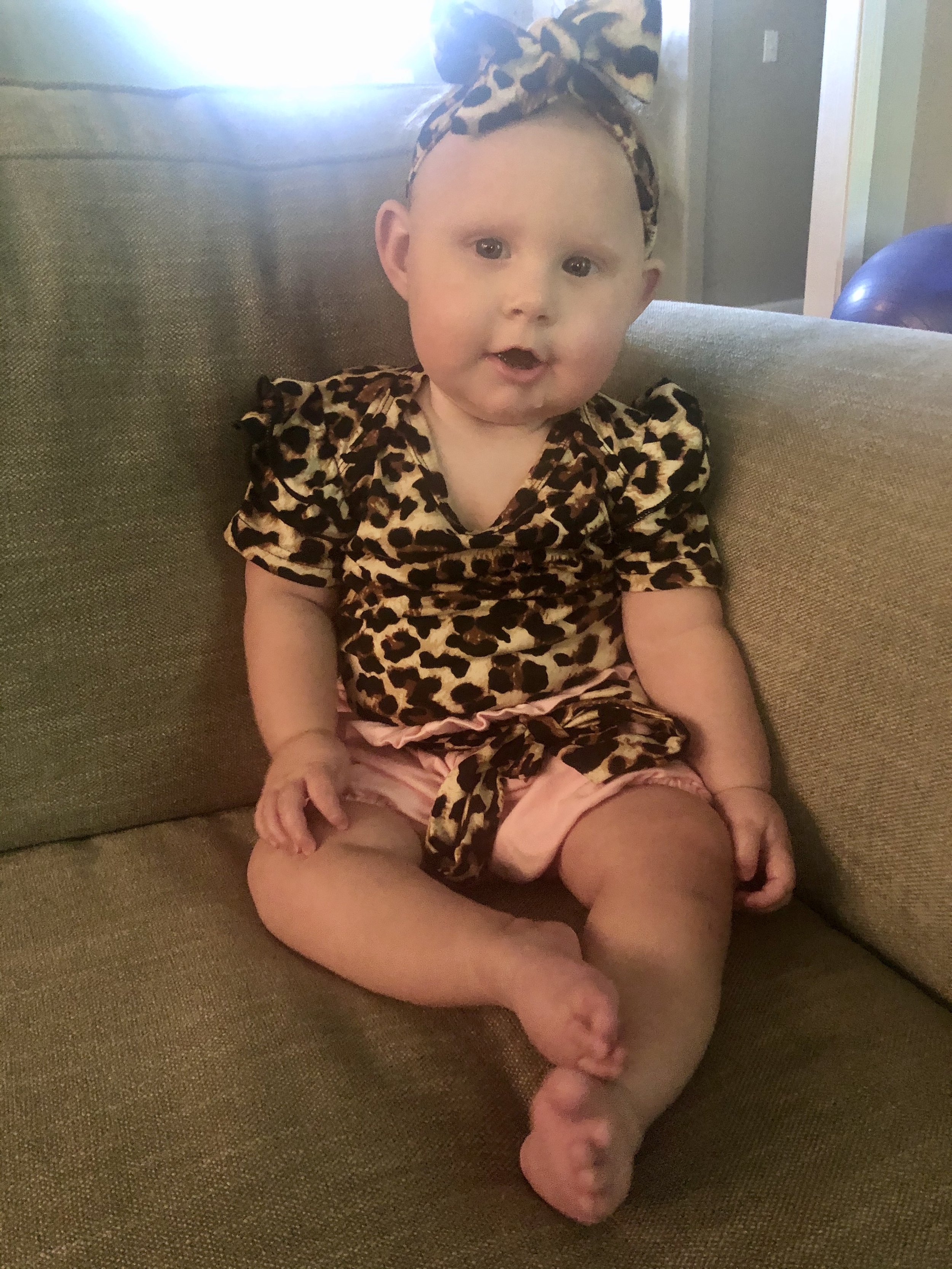Living with ReNU Syndrome
Isla
“Isla’s Odyssey”
Isla is the youngest of 3 girls. After a very typical pregnancy Isla was born via C-Section because she was breech. About 12 hours after birth I asked the nurse if Isla’s head looked small, something just seemed different this time. The nurse didn’t think so. We were released from the hospital 24 hours after delivery and told to follow up with our pediatrician within a few days. Our pediatrician immediately agreed that her head was measuring small. We went in every 2-3 days for 2 weeks to measure.
Isla was also a mouth breather, only looked up at lights and had difficulty latching and drinking from a bottle. At one month old we did a CT to determine why her head wasn’t growing at a normal pace. We were also referred to a Neurologist. The CT recommended an MRI, so at 2.5 months old Isla had a brain MRI. Shortly after we met her neurologist. At this time she was diagnosed with microcephaly, global developmental delay and cortical visual impairment.
Isla’s brain MRI was abnormal. Her MRI showed mild prominence of the subarachnoid space along with mild prominence of the ventricular system, likely related to mild white matter volume loss. Her neurologist ordered a whole genome oligonucleotide array CGH + SNP. The results were negative. He then ordered WES which also came back negative. At this point we had a referral in for genetics. We started PT and OT. At 10 months old we added speech and feeding.
In August of 2021 Isla’s WGS also came back negative and we were told we just had to wait for science to catch up with Isla. Her medical team supported us every step of the way. No one ever said, “she will never” it was always, “we just don’t know”. So we did what we could with the knowledge we had.
We found the best pediatric therapy clinic in our state, about an hour away from our home. When Isla turned 3 and we had her transition meeting from early intervention to school services we quickly realized the school district would not be able to meet Isla’s needs. She needed PT, OT, Speech and Vision services. So we started looking at larger cities with bigger special education departments. Then we packed up our family, left the home we’d built 2 years before Isla was born and started a new chapter closer to therapy and in a wonderful school with a great multi-disability program.
Isla has continued with her therapies, she gets private services and school services. We felt like we were doing everything we could but still at a loss for answers. What did life look like for Isla in 5 years? What were expected outcomes? Should we be targeting a specific type of therapy that would be best for her unknown genetic disorder?
Finally, in 2024, I submitted our application to UDN. Trying to keep my expectations low but thinking if anything we could add data to the ongoing research. After she was accepted we sent in all of her medical records and genetic testing results.
We were shocked when a month later we got a call that her WGS had been re-analyzed and a new variant that was recently discovered had been identified on her testing. We immediately went to renusyndrome.org. We looked through each section, when we came across the characteristics we couldn’t believe it. There were other Isla’s out there. We were no longer alone. The anecdotal description was like they’d applied Isla to paper. Then my husband and I sat on the couch and just cried. So many tears. To have a newly discovered genetic syndrome with such a strong family support system already in place to learn from and connect with.
A new syndrome with new published research and the promise of so much more to come. Suddenly we were no longer on an island, we were part of a community.
We’re ready to learn more about ReNU and contribute in any way that we can.


